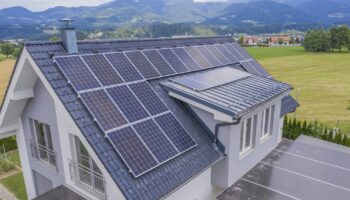Maintaining the longevity of your roof is crucial for protecting your home and ensuring its structural integrity. Roof coating offers a practical and cost-effective solution for extending the lifespan of your roof by up to 20 years. In this ultimate guide, we’ll explore everything you need to know about roof coating, including its benefits, types, application methods, and maintenance tips.
What is Roof Coating?
Roof coating is a protective layer applied to the surface of a roof to enhance its durability and performance. It serves as a shield against various environmental factors, such as UV rays, rain, and extreme temperatures. Roof coatings can be applied to different types of roofs, including flat, pitched, metal, and shingle roofs.
Types of Roof Coatings
1. Acrylic Roof Coating
Acrylic roof coatings are known for their excellent UV resistance and flexibility. They are water-based and can be applied to a variety of roof surfaces. Acrylic coatings help in reflecting sunlight, which reduces cooling costs and extends the roof’s lifespan.
2. Silicone Roof Coating
Silicone coatings provide superior waterproofing capabilities and are ideal for flat or low-sloped roofs. They form a seamless, flexible membrane that resists ponding water and extreme weather conditions. Silicone coatings are also known for their durability and low maintenance requirements.
3. Polyurethane Roof Coating
Polyurethane coatings offer excellent resistance to foot traffic and abrasion. They are suitable for both residential and commercial roofs and provide a tough, long-lasting finish. Polyurethane coatings are particularly effective in areas with high foot traffic or heavy equipment.
Benefits of Roof Coating
1. Extended Roof Lifespan
Applying a roof coating can significantly extend the lifespan of your roof by protecting it from environmental damage. A well-maintained roof coating can add up to 20 years to the life of your roof, reducing the need for costly repairs or replacements.
2. Energy Efficiency
Roof coatings can improve your home’s energy efficiency by reflecting sunlight and reducing heat absorption. This helps in maintaining a stable indoor temperature, which can lead to lower energy bills and enhanced comfort.
3. Cost-Effective Maintenance
Roof coatings are a cost-effective alternative to roof replacement. They provide a protective barrier that can reduce the need for frequent repairs and maintenance, ultimately saving you money in the long run.
How to Apply Roof Coating
1. Preparation
Before applying a roof coating, ensure that the surface is clean, dry, and free of any debris or contaminants. Perform any necessary repairs to address leaks or damaged areas. Proper surface preparation is essential for achieving a smooth and effective application.
2. Application
Follow the manufacturer’s instructions for the specific type of roof coating you are using. Typically, roof coatings are applied using a roller, brush, or spray equipment. Apply the coating evenly, ensuring complete coverage of the roof surface. Allow sufficient drying time between coats if multiple layers are required.
3. Maintenance
Regular maintenance is crucial to ensure the longevity of your roof coating. Inspect the roof periodically for signs of wear or damage and address any issues promptly. Reapply the coating as needed to maintain its protective properties.
Conclusion
Roof coating is a valuable investment for homeowners seeking to extend the life of their roofs and enhance their home’s energy efficiency. By choosing the right type of coating and following proper application and maintenance practices, you can enjoy the benefits of a durable and long-lasting roof. With the information provided in this ultimate guide, you’re well-equipped to make informed decisions about roof coating and ensure your roof remains in top condition for years to come.




